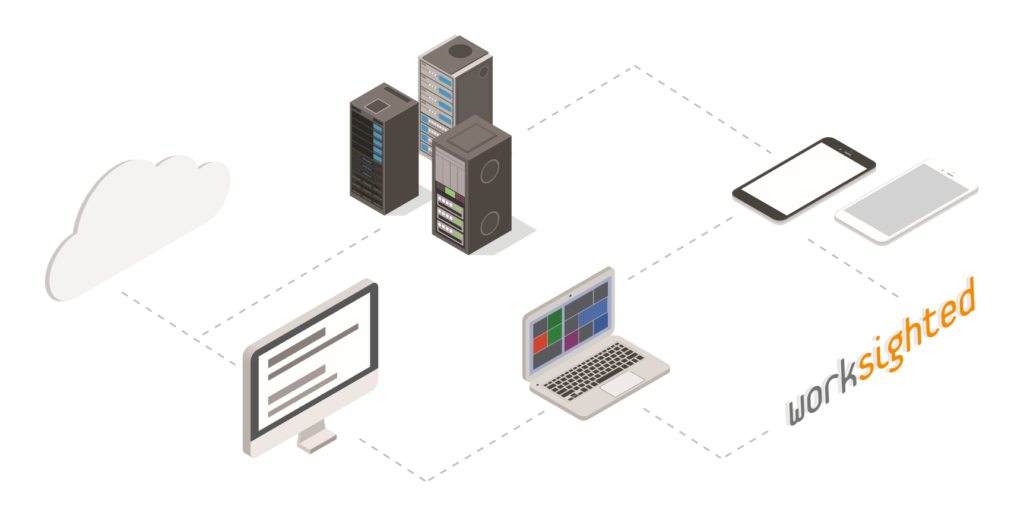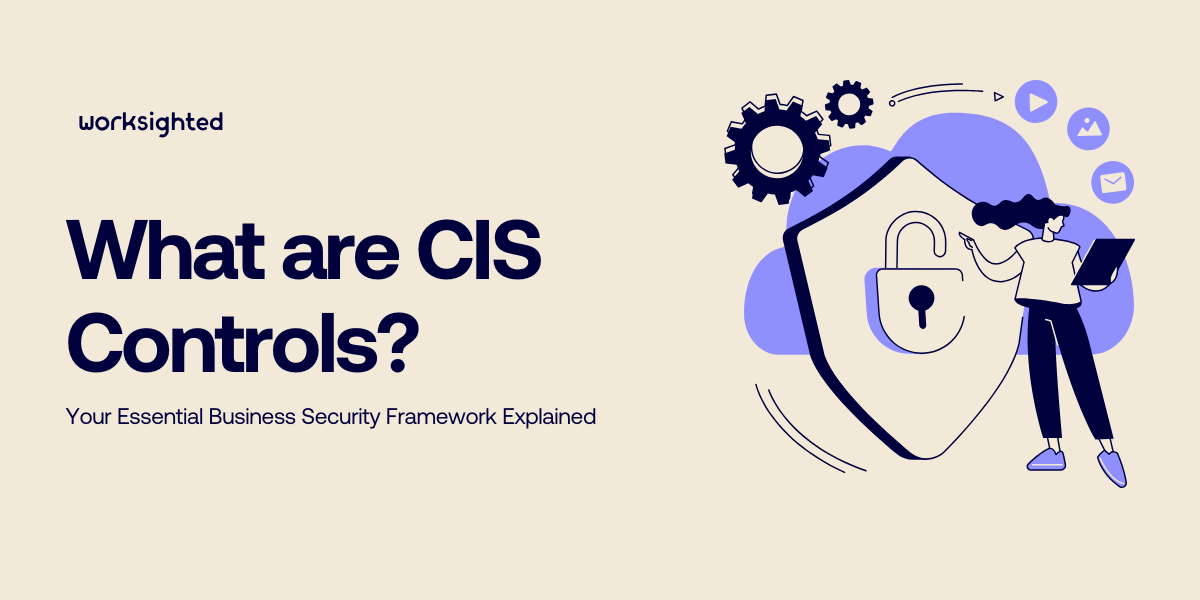The Ultimate Year-End IT Checklist: A Strategic Guide to Your Business’s IT Roadmap
 For mid-sized and enterprise organizations, year-end IT planning isn’t just a routine task—it’s a strategic move that can drive business growth, reduce risk, and set the stage for a successful year. The organizations that thrive are the ones that treat IT as a business enabler, not just a support function. They align their technology with company goals, strengthen their security posture, and optimize operations before the year closes.
For mid-sized and enterprise organizations, year-end IT planning isn’t just a routine task—it’s a strategic move that can drive business growth, reduce risk, and set the stage for a successful year. The organizations that thrive are the ones that treat IT as a business enabler, not just a support function. They align their technology with company goals, strengthen their security posture, and optimize operations before the year closes.
As a managed IT service provider (MSP), our expertise is rooted in enabling organizations to strategically optimize their year-end IT initiatives. We possess a deep understanding of the key drivers for successful Q4 planning, which has allowed us to consistently guide clients toward achieving their operational and growth objectives.
This comprehensive checklist is designed to help your organization address the most critical areas of IT planning, ensuring a strong finish to the fiscal year and a robust foundation for a prosperous and successful new year.
Strategic Planning & Budgeting
A well-defined IT budget is a strategic roadmap. Our experience has shown that organizations that prioritize proactive, year-end IT budget planning are better positioned for success, as it allows them to invest strategically and align technology spend with key business objectives.
Conduct a Comprehensive Tech Audit
Start by taking a full inventory of your organization’s hardware, software, and IT services. Identify outdated systems, unused licenses, and redundant tools that may be consuming budget without delivering value. A thorough audit not only streamlines operations and reduces costs—it also ensures your team enters the new year with a lean, high-performing tech stack.
Align IT Strategy with Business Objectives
IT should be a strategic partner—not just a support function. Meet with department leaders to understand their goals for the upcoming year and identify where technology can help drive those initiatives forward. During these conversations, it’s crucial to ask targeted questions that go beyond simple needs, such as:
• Security Risk: What new tools, platforms, or data-sharing initiatives could introduce security vulnerabilities, and what proactive measures are needed to mitigate those risks?
• Acquisition Readiness: How will your department’s technology requirements change if a new business unit is integrated, and what systems need to be scalable or interoperable to support a future acquisition?
• Operational Efficiency: Are there manual processes that could be automated or streamlined, particularly those that handle sensitive data or impact regulatory compliance?
• Headcount Planning: What technology will be required to support anticipated headcount growth, new remote or hybrid work models, or departmental restructuring?
Your IT strategy should reflect your business priorities and ensure every department has the tools it needs to succeed. When IT is aligned with organizational goals, it becomes a catalyst for innovation and growth.
Finalize a Future-Ready IT Budget
With your audit complete and business goals aligned, it’s time to finalize your IT budget for the year ahead. Make sure it covers both operational essentials and strategic initiatives. Instead of focusing solely on maintenance, allocate funds toward technologies that improve efficiency, reduce risk, and support innovation. Consider investments in automation, cloud infrastructure, AI-powered tools, and cybersecurity enhancements that deliver measurable impact and position your organization for long-term success.
Fortifying Your Security Strategy
If you’re not actively strengthening your cybersecurity posture, you’re leaving the door open to risk. This is the time to take decisive action. As organizations navigate transitions and prepare for the new year, taking a proactive approach to cybersecurity now can prevent costly breaches later. Focus on the foundational elements that protect your business and empower your team.
Evaluate Your Security Posture
Start with a full assessment of your current cybersecurity environment. Incorporate penetration testing, vulnerability scans, and infrastructure reviews to uncover weaknesses before they’re exploited. A detailed evaluation helps prioritize remediation efforts and ensures your defenses are current and effective.
Perform an Access Control Review
Year-end transitions often bring employee turnover and role changes. Take time to review user permissions across your systems and remove access for anyone who no longer needs it. Limiting access to only what’s necessary helps reduce risk and prevents unauthorized activity—whether accidental or intentional.
Validate Your Backup and Recovery Plan
Imagine your worst-case scenario: a total data loss. Do you know for a fact that your backups will work when you need them most? The only way to be sure is to test them. Confirm that your backup systems are complete, accessible, and reliable, so you can restore operations quickly in the event of ransomware, hardware failure, or accidental deletion.
Strengthen Your Human Firewall
Your people are your first line of defense. Schedule mandatory cybersecurity training for the new year to reinforce best practices and build awareness around phishing scams, social engineering, and other common threats. It’s a small investment that pays off in a big way—reducing risk, preventing breaches, and empowering employees to make smarter security decisions every day.
Optimize IT Support and Operations
A well-run IT operation is the backbone of a productive, resilient business. Year-end is the perfect time to evaluate how your support systems, infrastructure, and vendor relationships are performing and make adjustments that set your team up for success in the new year.
Identify and Resolve Recurring Support Issues
Review your IT support tickets from the past year to uncover patterns and repeat problems. Are your support staff constantly putting out the same fires? If the same issues keep surfacing, it’s a sign that deeper changes are needed—whether that means upgrading outdated systems, refining internal workflows, or offering targeted user training. Addressing root causes reduces downtime, improves user satisfaction, and frees up your IT team to focus on higher-value initiatives.
Evaluate Hardware for Replacement
Take inventory. Now is the time to check the age of your equipment. Identify any computers, servers, or other devices that are nearing end-of-life and plan for replacements. Go beyond age alone—evaluate each asset’s performance, reliability, and compatibility with current workloads. Aging hardware can lead to increased support tickets, slower performance, and security vulnerabilities. Proactively replacing outdated equipment helps maintain operational efficiency, reduces risk, and ensures your team has the tools they need to stay productive.
Audit Vendor Performance and Contracts
Take a close look at your vendor relationships to ensure you’re receiving the level of service, responsiveness, and value your business requires. Are service-level agreements being met? Are costs justified by outcomes? Use this opportunity to renegotiate contracts, consolidate services, or explore new providers that better align with your operational goals and budget.
Update and Organize IT Documentation
Accurate, accessible documentation is critical for operational efficiency and business continuity. Ensure that network diagrams, system configurations, process guides, and onboarding materials are up to date and easy to locate. Strong documentation accelerates troubleshooting, supports faster onboarding, and empowers your team to respond effectively during incidents or transitions.
Turning Plans into Action: Your Path to a Stronger 2026
As the fiscal year winds down, the most successful organizations don’t scramble; they execute a plan. They use year-end IT planning as a strategic opportunity to align technology with business goals, reduce risk, and build momentum for the year ahead.
By taking a proactive approach across strategy, security, and operations, your team can close out the year with confidence and a clear roadmap for success. Whether you’re refining your IT budget, strengthening your cybersecurity posture, or optimizing support systems, each step you take now sets the tone for a more resilient and efficient future.
You’ve Got the Plan. Now Let’s Make It Happen.
Year-end planning is a critical opportunity to move from intention to execution. With your IT strategy mapped out; whether it’s refining infrastructure, strengthening security, or aligning technology with business goals—the next step is turning that vision into action.
As a managed IT services provider, we help organizations navigate these transitions with clarity, insight, and long-term perspective. From optimizing operations to preparing for future growth, our team is here to support your next move.
Ready to take the first step toward a strategic, secure IT roadmap? Let’s build it together. Contact our team of experts today.




